Exploring the Complexities of the Zelda Universe

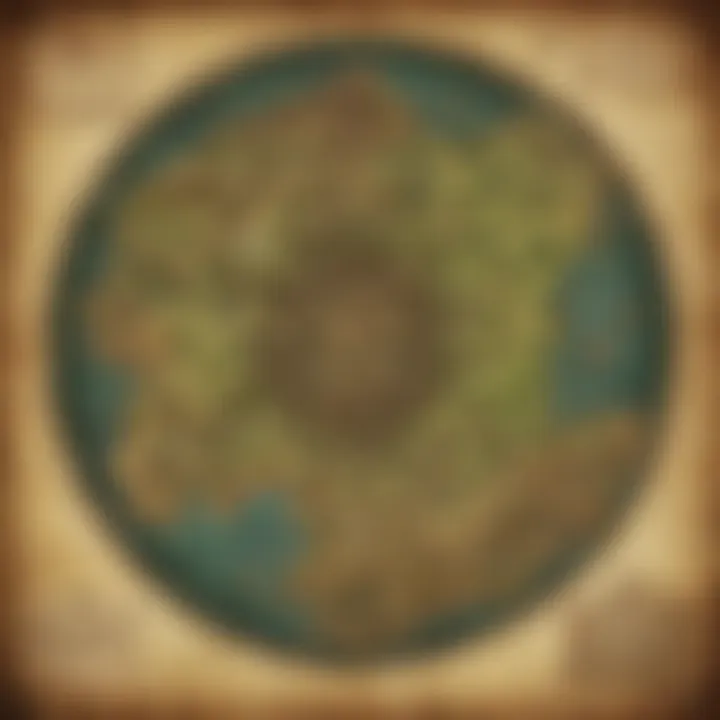
Intro
The Zelda franchise has long captivated players with its unique blend of challenging gameplay, intricate storylines, and rich lore. The series, created by Nintendo, has managed to evolve while maintaining its core principles that fans have come to love. Each installment introduces new mechanics, characters, and experiences, all while remaining tied together by a common thread.
This exploration of the Zelda universe aims to provide a comprehensive guide through various elements, including gameplay features, character development, and the mythological roots that inspire its narrative. By understanding what makes this series tick, both new and seasoned gamers can appreciate Zelda on a deeper level.
Game Reviews
Gameplay Features and Mechanics
Gameplay in the Zelda series often combines action-adventure elements with puzzle solving. Each title introduces unique mechanics that address the challenges players face. For instance, in The Legend of Zelda: Breath of the Wild, players interact with an expansive open world. Here, freedom of exploration coupled with a dynamic physics engine creates countless possibilities. Other titles may focus more on dungeons and combat mechanics, like in The Legend of Zelda: Ocarina of Time.
Storyline and Quests
Zelda games are known for their rich, often mythical storytelling. Typically, the narrative centers around Link, the series’ protagonist, who embarks on a quest to rescue Princess Zelda and thwart the evil plans of Ganon. However, stories in the franchise can diverge significantly depending on the title. Most games feature side quests that enrich the main narrative and deepen the player's engagement with the world.
Visuals and Sound Design
The visual style of Zelda games has evolved tremendously since the original release. From the pixelated graphics of the NES to the stunning art in Breath of the Wild, each era brings its own aesthetic. The sound design also plays a critical role. Iconic music, composed by Koji Kondo and others, enhances the atmosphere. Many fans recognize themes that evoke nostalgia.
Comparison with Previous Titles
The diversity in Zelda titles showcases the evolution of game design. While some games, like Twilight Princess, opted for a darker tone, others embraced a more whimsical approach, as seen in Wind Waker. Each title builds upon its predecessors, providing both innovations and familiar experiences that resonate with fans.
Character Analyses
Popular Characters Overview
The Zelda universe is rich with beloved characters. Most notable is Link, often depicted as a brave and resilient hero. Princess Zelda herself varies greatly in role and representation; she has been both a damsel in distress and a significant force in her own right. Other characters like Ganon and Impa also contribute depth to this universe, embodying various themes and archetypes.
Character Development and Backstories
Understanding characters in Zelda involves delving into their backstories. Link's journey often symbolizes growth, transformation, and the struggle between good and evil. Similarly, Zelda’s portrayal evolves with each title. Her character often reflects changing gender roles and strength in adversity.
Role in the Zelda Universe
Each character serves a purpose in the overarching narrative. Link is the hero; Ganon represents chaos. Zelda stands as a symbol of wisdom and courage. They interact within an intricate web of lore, each contributing to a rich tapestry that fans eagerly dissect and analyze.
Fan Theories and Speculations
Many fans engage in theories regarding character relationships and the series' timeline. Some speculate about the connections between different incarnations of Link and Zelda. Others discuss how their fates influence the collective story of the Zelda universe.
Lore Discussions
Mythology and Worldbuilding
Zelda draws on an array of mythological influences. The world of Hyrule is steeped in legends and lore that mirror real-world mythology. This dimension adds a layer of complexity and immersion, inviting players to explore a realm that feels both familiar and fantastical.
Legendary Items and Artifacts
Throughout the series, certain items are intrinsic to gameplay and lore. The Master Sword, Link's signature weapon, symbolizes the eternal battle against evil. Other artifacts like the Triforce represent the balance of power, wisdom, and courage within the universe, highlighting the philosophical themes present in the series.
Link to Real-world Mythologies
Many elements within Zelda hint at influences from various mythologies. This connection enhances the narrative complexity and encourages players to draw parallels with their cultural contexts. Inspiration can be traced from Celtic to Japanese mythologies, enriching the lore.
Timeline Placement and Theories
The complex timeline of Zelda has been a subject of extensive analysis among fans. The official timeline released by Nintendo outlines various branches and connections, showing how each title fits into a larger narrative framework. This complexity invites ongoing discussions among the community.
Gameplay Strategies
Combat Techniques and Tips
Combat in Zelda is central to the experience. Each game offers different techniques tailored to its unique mechanics. Learning how to effectively use weapons and environmental elements can greatly enhance your chances of success. Mastery of dodging and counters is essential, especially in games like Breath of the Wild.
Puzzle Solutions and Walkthroughs
Many Zelda titles are renowned for intricate puzzles that require critical thinking. Various resources, including community forums like Reddit, provide walkthroughs that guide players through challenging sections.
Collectibles and Side Quest Guides
The allure of Zelda often lies in uncovering collectibles. Many players seek out side quests for rewards that deepen their understanding of the game. Engaging with these aspects is essential for completionists.
Boss Battles Tactics and Strategies
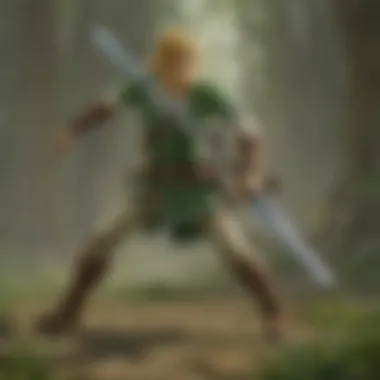
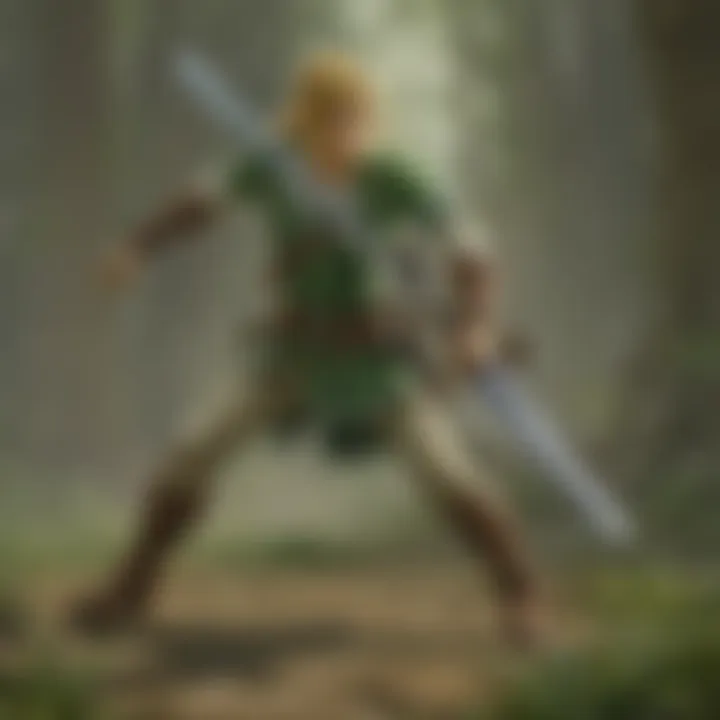
Facing bosses requires strategy and preparation. Each encounter presents unique challenges. Learning attack patterns and weaknesses is essential. Players must adapt their strategies to overcome these daunting foes, such as Ganon or Calamity Ganon, making preparation key.
The Zelda series is not merely a game but an enduring legacy that continues to inspire generations of fans through its intricate designs and profound storytelling.
Prologue to the Zelda Series
The Zelda series is not just a collection of video games; it is a significant part of gaming history. It has shaped the industry and influenced countless other titles. Understanding the Introduction to the Zelda Series is crucial for grasping its complexities. This section will explore its historical context and cultural impact. Knowing where the series comes from and how it has influenced and been influenced by the world around it can offer deeper insights into its ongoing legacy.
Historical Context
The first installment of the Zelda series, The Legend of Zelda, debuted in 1986 on the Nintendo Entertainment System. It introduced a revolutionary approach to gameplay that emphasized exploration and puzzle-solving. This was a significant departure from more linear game designs that dominated at the time. The initial game's blend of action, puzzles, and an open world set the tone for future titles. Over the years, the Zelda franchise has evolved through multiple hardware generations, showcasing shifts in design philosophy, technology, and player expectations.
The release of The Legend of Zelda: Ocarina of Time in 1998 marked a pivotal moment in gaming. It transitioned the series into a 3D environment, which raised the narrative and gameplay complexity to new heights. This title received universal acclaim and established benchmarks for storytelling and game mechanics, which many subsequent games sought to achieve.
Cultural Impact
The cultural impact of the Zelda series is profound. It transcends mere entertainment, embedding itself into the fabric of gaming culture. The series has produced iconic characters, like Link and Zelda, who are recognizable even to those unfamiliar with the games.
Zelda has influenced a generation of game developers and players alike.
The series has inspired a range of merchandising, fan art, and even academic discourse. The intricate lore and its embedded themes of heroism, friendship, and the battle between good and evil resonate with a broad audience. Its music, composed by Koji Kondo, is celebrated in its own right, further embedding the series in popular culture.
In essence, understanding the historical context and cultural significance of the Zelda series enriches one's appreciation of its gameplay, narrative, and enduring legacy. Exploring these elements lays the groundwork for deeper insights into the series' mechanics, character development, and immersive world that will be examined throughout this article.
Core Gameplay Mechanics
In the realm of the Zelda series, gameplay mechanics serve as the foundation that interconnects the player with the vibrant world and its multifaceted narrative. This section dismantles the essential elements that form the core of the gameplay experience. Understanding these components not only enhances appreciation of the series but also reveals why it remains a timeless classic in the gaming industry. The interplay of exploration, puzzle-solving, and combat strategies crystallizes the essence of what makes Zelda significant.
Exploration Dynamics
Exploration is a critical aspect of the Zelda experience. Each title invites players to traverse expansive landscapes filled with hidden secrets, treasures, and various enemies. The act of exploring becomes a way to interact with the environment, offering depth beyond mere narrative exposition. Players venture into forests, mountains, and dungeons, each area designed meticulously to evoke curiosity. The introduction of mechanics such as the Minimap and Shovel furthers this dynamic, encouraging players to dig deeper and traverse across different terrains.
In games like Breath of the Wild, open-world exploration is expanded further. Here, players are granted unparalleled freedom to approach challenges in various ways, whether by ascending mountains or gliding across vast chasms. This level of freedom in exploration allows for a highly personalized gaming experience. The environment is not just a backdrop but a character in its own right, with intricate lore tied to the places players visit.
Puzzle Solving Elements
Puzzle-solving is another hallmark of the Zelda franchise. Each game incorporates intricate challenges that demand critical thinking and creativity. These puzzles are interspersed throughout dungeons, using items like the Boomerang or Bow to manipulate the environment or defeat enemies. The blend of combat and puzzle-solving fosters a sense of accomplishment, driving the story forward when a player successfully overcomes an obstacle.
Particularly notable is the evolution of puzzles across different games. Early titles relied on simple, logical transitions, whereas later entries, such as The Legend of Zelda: Ocarina of Time, introduced multi-layered puzzles that often required the use of multiple items in tandem. Players are invited to think outside the box. They must combine various abilities, adding layers to the gameplay that challenge their ingenuity.
"Zelda’s puzzles represent a marriage of intellect and exploration, drawing players deeper into Hyrule's mysteries."
Combat Strategies
Combat is an essential feature of Zelda, elevating the stakes for players as they interact with hostile entities throughout the series. Each game introduces unique combat mechanics, adapting to the evolving expectations of players. The introduction of features like Z-targeting in Ocarina of Time transformed how combat is approached, making enemy encounters more strategic rather than merely button-mashing.
Different weapons and tools, for instance, swords, shields, and even magic spells, allow for diverse combat strategies. Players can choose to be aggressive, employing powerful offensive moves, or defensive, blocking and evading attacks. This versatility keeps encounters fresh and engaging.
Moreover, enemy types vary significantly from one installment to another, encouraging adaptability. Players learn to devise strategies tailored to specific foes, thus enhancing their overall skill. Consequently, mastering combat mechanics is as rewarding as solving puzzles or uncovering secrets.
In summary, the core gameplay mechanics of the Zelda universe construct an intricate web of interaction, requiring both creativity and strategic thinking. Players delve into exploration, engage with complex puzzles, and refine their combat tactics, ensuring the series maintains its the dominance in the landscape of video games.
Character Analysis
The exploration of character dynamics within the Zelda universe is crucial to understanding its depth and appeal. Character analysis allows enthusiasts to appreciate not only the unique personalities presented but also their impact on the overarching story. Analyzing these characters reveals the themes woven into their journeys, offering fans insight into motivations, relationships, and growth. The characters in Zelda also create a emotional connection with players, making the experience more engaging. Over time, these characters have developed and evolved, cementing their positions as icons in gaming culture.
Link: The Hero of Time
Link, the primary protagonist, embodies the archetype of the hero who rises against adversity. He is often characterized by his courage, resilience, and unwavering determination. His silent persona allows players to project their own thoughts and feelings onto him, creating a deeper connection. As Link traverses Hyrule, he gains skills and items that signify his growth. Each title presents a new challenge that forces Link to adapt, thus showcasing his development not only in combat but also in wisdom and compassion.
Link's appearance varies across titles, yet his core identity remains consistent. He symbolizes hope, serving as the beacon for not only the kingdom of Hyrule but also for players seeking adventure.
Zelda: The Evolving Princess
Zelda has transformed through the series, moving from a damsel in distress to a formidable character in her own right. Her evolution reflects changing perspectives on femininity and strength. In earlier games, Zelda often played a passive role. However, titles like "The Legend of Zelda: Breath of the Wild" introduce her as a pivotal figure who fights alongside Link.
Zelda embodies wisdom and grace. Her connection to the Triforce underscores her integral role in maintaining balance in Hyrule. This complicated character development contributes significantly to the narrative, showing her struggles, sacrifices, and ultimately, her strength in facing challenges. Players find her depth intriguing, recognizing the challenges she overcomes while carrying the weight of her responsibilities.
Supporting Characters and Their Roles
The Zelda universe is populated with a multitude of supporting characters, each contributing unique elements to the story. Characters like Navi, the Kokiri fairy, and Tingle, the eccentric character obsessed with fairies, add layers of humor and support to Link’s journey.
**Significant Supporting Characters:
- Impa:** a guardian of the royal family, embodies loyalty and strength.
- Ganon: an embodiment of evil, serves as the primary antagonist across many titles.
- Navi: offers guidance to Link, reinforcing the importance of communication in his quest.
- Tingle: represents the quirky aspects of Zelda's world, showcasing the variety present in Hyrule.
These characters enhance the richness of the narrative and help build a more immersive experience for players. Through their interactions with Link and Zelda, they reflect various themes like friendship, loyalty, and the struggle against darkness. Supporting characters are not merely sidekicks; they serve as essential components that enrich the story, making the Zelda franchise a multifaceted universe.
Narrative Structures Across Titles
The narrative structures of the Zelda series are intricate and layered. These structures not only support gameplay but also contribute significantly to the series' identity. By examining these narratives, we understand the depth of the Zelda universe and the complex relationships between its characters. The ways in which the stories unfold from one title to the next create a cohesive fabric that links various installments together. This continuity ensures that both new and seasoned players can appreciate how characters evolve and how their surroundings influence their journeys.
Themes and Motifs
Themes in Zelda games often explore the cyclical nature of time and fate, with concepts like courage, wisdom, and power represented through the Triforce. These motifs recurve throughout the game series, creating a tapestry of meaning that resonates with players. The recurring theme of the battle between good and evil is depicted through Link's perpetual confrontation with dark forces, most notably Ganon. The struggle for peace and the quest for identity are also vitally important, enhancing the player’s emotional connection to the narrative.
- Courage is embodied by Link, who consistently faces overwhelming odds.
- Wisdom is often exhibited by Princess Zelda, who navigates the challenges posed by her lineage and role.
- Power, portrayed through Ganon, often symbolizes the corruptive effects of ambition and greed.
These themes not only drive the gameplay but also enrich the player's experience, inviting deeper reflection on personal growth.
Chronological Challenges
The timeline of the Zelda series is a subject of great fascination among fans. Chronological challenges arise from the non-linear storytelling present in many games. The official timeline released by Nintendo presents several branches, each representing different outcomes based on Link's victories or failures. This complexity can create confusion but also allows for unique storytelling opportunities.
For example, "The Legend of Zelda: Ocarina of Time" establishes foundational elements that ripple through later games, creating links that define how future stories evolve. This branching allows players to experience familiar characters and lore from diverse perspectives. The chronological challenges also encourage players to immerse themselves in the lore, piecing together the relationships between events spanning decades of gameplay.
Character Arcs and Development
Character development is central to the narrative experience in Zelda. Each installment offers unique arcs that reveal more about Link, Zelda, and supporting characters. In "The Legend of Zelda: Breath of the Wild," for instance, Link awakens with no memory, establishing a fresh perspective on his character and prompting players to discover his past through gameplay.
Zelda, too, undergoes significant growth. In "The Legend of Zelda: Twilight Princess," she evolves from a passive figure to an active participant in the story, reflecting the series’ shifting view of her role.
Supporting characters like Impa and Navi also illustrate the diverse range of personalities in the series. Their narratives add depth, as they often act as guides or confidants to Link, enriching his journey.
"The evolving narratives remind us that characters are shaped by their actions and the environments around them."
The Evolution of Graphics and Technology
The evolution of graphics and technology in the Zelda franchise presents a fascinating narrative of transformation and adaptation. Each installment showcases not just advancements in visual fidelity but also increased depth in storytelling and environmental immersion. As technology has progressed, so too has the ability for developers to create more intricate worlds, characters, and experiences. This evolution has expanded the gameplay possibilities and, ultimately, the emotional connection players feel with the series.
From 8-Bit to HD Graphics
The journey of Zelda begins in the late 1980s, where its inception on the NES featured simplistic 8-bit graphics. These pixels carried the weight of a robust world brimming with adventure. Despite their limitations, they pushed players' imaginations and marked the foundation of the franchise. As systems improved, so did the graphics.
With the release of The Legend of Zelda: Ocarina of Time on the Nintendo 64, 3D graphics debuted. This shift provided a richer visual landscape and allowed players to explore Hyrule in greater depth. Environments became more detailed. Character animations improved, fostering a stronger narrative immersion.
Later developments, such as those seen in The Legend of Zelda: Breath of the Wild, showcased high-definition graphics that brought the world alive. Textures, lighting, and physics were enhanced remarkably. These improvements allowed for a vibrant palette and nuanced environmental interactions. Players could see the sprawling fields of Hyrule, the intricate designs of dungeons, and the realistic physics of objects. Such innovations are not merely aesthetic; they enhance gameplay by making interactions feel tangible.
Sound Design and Music's Role
Sound design and music in the Zelda series serve as key elements that shape player experience. Music evolves with each title, crafting atmospheres that resonate emotionally with players. The iconic theme of The Legend of Zelda remains a testament to the power of its sound. It establishes a sense of adventure, instantly recognizable even years later.
In more recent titles, the orchestration has reached new heights. The scores in Breath of the Wild, for instance, combine subtle ambient sounds with evolving themes that reflect the emotional tone of the game. This adds layers to gameplay, allowing players to connect more deeply with the world.
Moreover, sound design incorporates environmental elements that work in harmony with visuals. The rustling of leaves, the distant cry of creatures, or the echoing footsteps in a dungeon enhance immersion through a cohesive audio-visual experience.
The impact of sound and graphics in gaming creates a richer narrative experience, making each playthrough of the Zelda Series unique.
In summary, the evolution of graphics and technology in the Zelda universe encapsulates a rich history of innovation. From the early simplistic visuals to the complex, interactive worlds of today, each step has provided players with profound experiences. The thoughtful integration of sound design amplifies this effect, creating a multidimensional gameplay landscape that resonates with both new and long-standing fans.
Lore Exploration
The significance of lore exploration in the Zelda universe cannot be overstated. The Zelda series weaves a tapestry of interconnected stories, myths, and characters that enrich the gaming experience. This lore provides depth to the narratives, drawing players into the world of Hyrule and beyond. Understanding the lore helps players appreciate not just the gameplay, but the history and culture within this universe.
Each installment of the series contributes to a larger narrative that often revisits themes of courage, wisdom, and power. This complexity enhances player enjoyment and facilitates engagement with various in-game elements. Exploring lore also allows fans to fan theories and interpretations, broadening discussions among the community.
The Geography of Hyrule
The geography of Hyrule is a key element of the franchise's lore. Each location, from the tranquil fields of Hyrule Field to the foreboding cliffs of Death Mountain, provides context for gameplay and story. This diverse landscape shapes adventures and influences character movements. Each area has distinct landmarks, which also have their narratives. For example, the Temple of Time symbolizes loss and the passage of time, crucial for understanding the overarching story.
Hyrule is not merely a backdrop but a living, breathing character within the series. Players navigate this intricate world, discovering dungeons, villages, and secrets layered throughout its expanse. The environment fosters exploration and rewards curiosity.
Mythical Creatures and Legends
The rich tapestry of mythical creatures and legends contributes significantly to the lore of the Zelda universe. This series showcases beings like the Zoras, Gorons, and the elusive fairies, each embodying unique traits and narratives. These characters not only enhance gameplay but also illustrate deeper moral and philosophical questions.
Creatures, like Ganon or Dark Link, embody primordial evil, providing conflict that drives the story. Each legend fosters engagement, challenging players to understand the world’s history and their roles within it. This dynamic urges players to see their impact on the narrative and take pride in their accomplishments.
The Triforce: Symbolism and Significance
The Triforce stands as a powerful symbol within the Zelda lore. Comprising three golden triangles representing power, wisdom, and courage, its significance transcends mere artifact status. The Triforce is often central to the storyline, serving as both a motivator and a source of conflict.
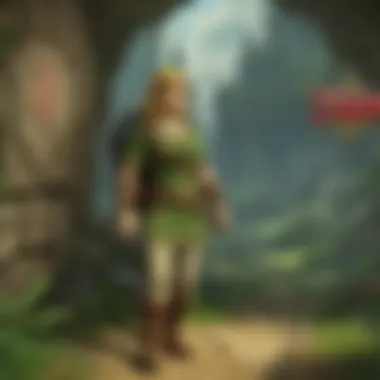
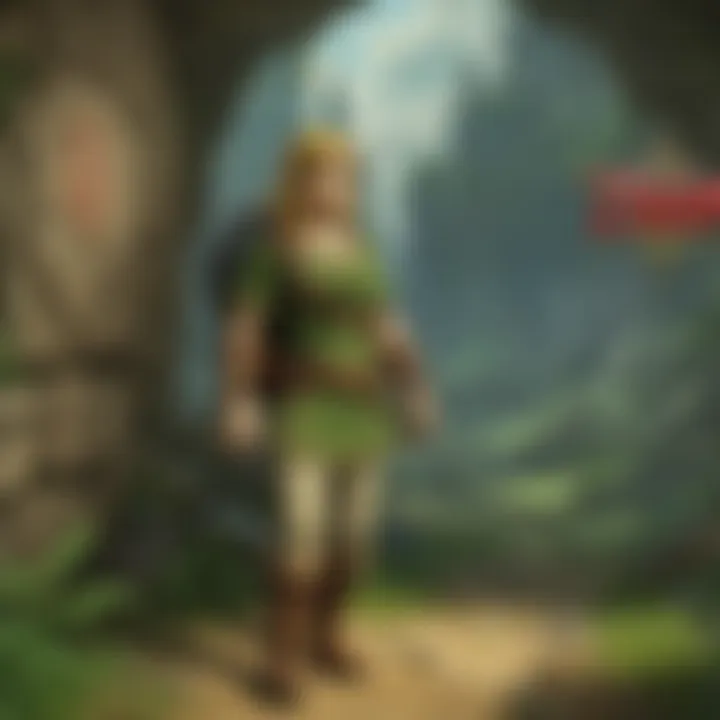
Its allure illustrates the balance between the virtues it represents. The quest to obtain or protect the Triforce reflects the player’s journey through challenges, echoing the series' central themes. Its recurring presence begs questions about the nature of power and responsibility, enriching the narrative.
"The Triforce symbolizes the profound struggle between good and evil, a theme that reverberates throughout the Zelda franchise."
Community and Fan Engagement
Engagement with the Zelda community is crucial to understanding the series at a deeper level. This interaction fosters loyalty and promotes discussions about the series' intricate narratives, gameplay, and the character dynamics within. Fans have dedicated countless hours to exploring the lore and theories that arise from each title, making the community a vibrant hub of creativity and innovation. This section examines key aspects of fan engagement including theories, cosplay, and the roles fans play in shaping the franchise.
Fan Theories and Speculation
Fans of the Zelda series have long embraced the complexity of its storylines through passionate theorizing and speculation. One of the most impactful outcomes of this engagement is the creation of a vast array of fan theories. These theories often explore the links between various games, attempting to connect timelines and uncover hidden meanings behind characters and events.
Some popular theories include the relationship between the timeline of Ocarina of Time and Majora's Mask, which explores concepts of time, and the interpretation of Ganon’s character throughout the series. As fans meticulously analyze cutscenes and dialogue, they generate discussions that enhance the overall experience of the games. Notably, community forums such as reddit.com serve as platforms where these theories circulate, sparking debate and encouraging further investigation.
The significance of fan theories lies in their ability to deepen the appreciation for the creations of developers. They invite players to engage critically with the material, creating a scholarly atmosphere around what is often perceived as merely entertainment. In this light, fans not only consume content but actively participate in the narrative construction.
Cosplay and Fandom Dimensions
Cosplay has become a prominent aspect of the Zelda fandom. Fans express their dedication through the artistic recreation of characters, such as Link or Zelda, using various materials and techniques. This form of engagement allows fans to embody their favorite characters physically and connect more deeply with the series.
Participation in conventions and online events often showcases elaborate costumes, highlighting the craftsmanship of fans. Cosplayers share their progress on social media platforms like facebook.com, where they exchange tips, techniques, and support for one another. The challenges involved with bringing a character to life can enhance the enjoyment of the game itself, making the world of Hyrule feel more tangible.
Through cosplay, fans also build local communities where they meet others who share their passion for Zelda. Events like Comic-Con become gatherings filled with like-minded individuals, creating a sense of belonging and collaboration among fans. This connection helps maintain the franchise's relevance, as each new generation of players continues to pass down the love for the series.
"Engagement in fandom, through theories and cosplay, enriches the experience of gaming and fosters a community that celebrates creativity and collaboration."
Critique and Reception
The topic of critique and reception plays a vital role in understanding the impact of the Zelda franchise. This section examines how critics and fans perceive the games and how their feedback influences future developments. Analyzing critiques offers insights into the strengths and weaknesses of major titles, while the reception from the fanbase reflects broader cultural trends and shifts in expectations. This dual perspective helps delineate the franchise's trajectory and its position within the industry.
Critiques are not merely subjective opinions; they often shape narrative expectations and gameplay mechanics in subsequent releases. Influential reviews can foster nuanced discussions among gaming communities and spark debates about game design principles and storytelling. In this sense, the reception serves as a reflective medium for both creators and gamers, causing developers to adjust or evolve elements based on community feedback.
Critical Reviews of Major Titles
In assessing the Zelda universe, a closer look at critical reviews can provide substantial insight. Major titles such as "The Legend of Zelda: Ocarina of Time" and "Legend of Zelda: Breath of the Wild" have been dissected by critics from various angles. Ocarina of Time, released in 1998, was often lauded for its revolutionary use of 3D graphics and innovative gameplay mechanics for its time. Critics emphasized its deep narrative and compelling character arcs. Similarly, Breath of the Wild received acclaim for redefining open-world gameplay, allowing unprecedented player freedom.
Critically acclaimed games are typically characterized by high scores on review aggregators like Metacritic. Here, the cumulative reviews offer an overview of what makes these games resonate with their audience. Consider the following points regarding critical reviews:
- Gameplay Mechanics: Critics frequently highlight how innovative mechanics influence player experience.
- Narrative Depth: A strong story often leaves a lasting impression, attracting critical praise.
- Visual and Technical Achievements: The evolution in graphics significantly impacts how a game is received.
Essence of these critiques not only informs players but also provides developers with benchmarks to aspire to in future projects.
Fan Reception and Influence on Future Installations
Fan reception serves as a powerful gauge of a game's success within the community. Engaged fandom shapes the ongoing narrative of the series, providing feedback that can steer future directions. For example, the reaction to character development or plot progression in games directly influences developer strategies in sequels and spin-offs.
Fans often express their views through various platforms, including Reddit discussions or social media. They share theories, art, and their interpretations of lore, contributing to a collective understanding of the Zelda universe. Significant points related to fan reception include:
- Community Speculation: Enthusiastic discussions can lead to hype surrounding upcoming titles or expansions.
- Cultural Representation: Fans often advocate for more representation within narratives and character design.
- Game Adaptations: Positive or negative feedback regarding adaptations, such as animated series, shapes future content decisions.
The interaction between fan reception and critical review reveals a reciprocal relationship, narrating how community expectations can alter developers' approaches and the artistic direction of the franchise.
Future of the Zelda Franchise
The future of the Zelda franchise holds significant importance within the larger context of this article. As one of the most beloved gaming series, its next steps can influence both its long-standing fans and newcomers entering the world of Hyrule. Anticipated releases and developments can redefine the gaming landscape, while innovative gameplay and storytelling traits can create new pathways for engagement. Understanding these future elements helps fans appreciate the franchise's evolution and maintain their attachment to its rich narrative.
Anticipated Releases and Developments
The future of the Zelda series is not merely speculative; several anticipated releases are on the horizon. The Legend of Zelda: Tears of the Kingdom, released recently, has reignited interest and speculation about potential expansions, sequels, or spin-offs. Fans discuss the possibilities of DLC that could enrich the existing gameplay and broaden the storyline. Moreover, rumors about remakes of earlier games in the series have surfaced, such as The Legend of Zelda: Twilight Princess and The Legend of Zelda: The Wind Waker.
Additionally, Nintendo's development trends suggest a continued focus on cross-platform availability. This could allow fans to enjoy Zelda adventures on mobile devices or other consoles in innovative formats.
"The potential for new narratives and gameplay designs keeps the Zelda franchise fresh and relevant in a constantly evolving industry."
Potential Innovations in Gameplay and Storytelling
With the advent of new technologies, the Zelda franchise has opportunities for gameplay and storytelling innovations that could redefine player experiences. Possible advancements may include:
- Augmented Reality: This could allow players to interact with the world of Hyrule in a more immersive way. For example, location-specific quests or collectibles could come into play.
- Interactive Storytelling: Non-linear narratives could provide players with choices that affect the story's outcome, increasing engagement and replay value.
- Expanded Multiplayer Modes: Implementing co-op gameplay might allow players to complete puzzles and battles together, which contrasts with the single-player tradition the series has primarily followed.
- Artificial Intelligence: AI-driven narratives could adapt to the player's actions, creating unique experiences tailored to individual gameplay styles.
These potential changes not only reflect gaming trends but also the enduring spirit of innovation that has characterized the Zelda series since its inception.
Ending
The conclusion of this article encapsulates the richness and depth that the Zelda universe offers to players and fans alike. It serves as a testament to the series' lasting impact on the gaming landscape and highlights why it remains relevant. Here, we emphasize several critical elements that contribute to the enduring legacy of Zelda.
The Enduring Legacy of Zelda
The Zelda franchise has shaped the landscape of video games since its inception in 1986. Its ability to intertwine gameplay, narrative, and historical elements surely marks it as a pioneering force in interactive entertainment. The series has thrived on innovation, consistently pushing boundaries of design and storytelling.
- Timeless Gameplay Mechanics: The gameplay in different Zelda titles still resonates with both new and veteran players. It offers a perfect blend of exploration, puzzles, and combat strategies. Each game introduces unique mechanics while maintaining a core essence that fans recognize.
- Rich Storytelling: The narrative structure, filled with themes of heroism, friendship, and the struggle between good and evil, keeps players captivated. The complex lore surrounding characters and regions in Hyrule encourages a deeper engagement that is often missing in other franchises. The cyclical nature of the story, where timelines converge, adds layers to the game that invite extensive analysis.
- Cultural Significance: The impact of Zelda goes beyond the screen. It has influenced various forms of media, including film and art. The music, composed by Koji Kondo, has become iconic, elevating emotional experiences encountered during gameplay. The melodies are instantly recognizable and contribute significantly to the atmosphere.
- Community and Influence: A strong, vibrant community of fans nurtures the franchise. Platforms like Reddit and Facebook have forums dedicated to not just playing, but also analyzing and theorizing about the Zelda universe. This engagement showcases the multifaceted nature of the narrative and creates an environment for shared exploration.
In summary, the enduring legacy of Zelda is driven by its innovative gameplay, compelling narrative, cultural significance, and engaged community. It evolves yet retains its core identity, making it a central pillar in the realm of video games, one deserving of admiration and study.







